God Only Knows Where We’d Be Without You . . . In Remembrance of Brian Wilson "Love and mercy, that's what you need tonight. So love and mercy
God Only Knows Where We’d Be Without You . . . In Remembrance of Brian Wilson
“Love and mercy, that’s what you need tonight. So love and mercy to you and your friends tonight.” — Brian Wilson, 1988
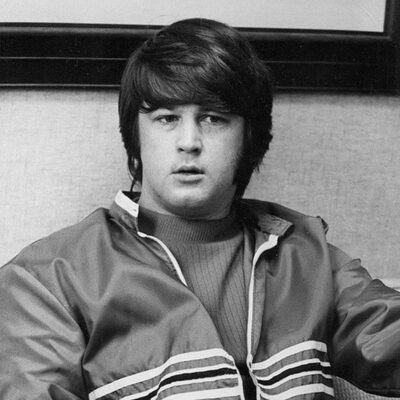 Today, the world says farewell to a composer who didn’t just write songs—he designed soundscapes, sculpted harmonies, and captured the soul of a generation. Brian Wilson, the sonic architect behind the Beach Boys and one of the most influential figures in modern music, passed away at the age of 82. Though the voice has gone silent, the vibrations will echo through eternity.
Today, the world says farewell to a composer who didn’t just write songs—he designed soundscapes, sculpted harmonies, and captured the soul of a generation. Brian Wilson, the sonic architect behind the Beach Boys and one of the most influential figures in modern music, passed away at the age of 82. Though the voice has gone silent, the vibrations will echo through eternity.
His family, in a simple and poignant message, confirmed the heartbreaking news: “We are heartbroken. Brian passed away peacefully. Please respect our privacy… Love & Mercy.”
California Dreaming: The Rise of a Beach Boy
Born on June 20, 1942, in Inglewood, California, Brian Douglas Wilson grew up in a modest home filled with equal parts music and tension. He was gifted with perfect pitch, a photographic memory for musical arrangements, and an early affinity for vocal harmony—skills that would become the foundation for a new American sound.
In 1961, Brian formed the Beach Boys with his younger brothers Dennis and Carl, cousin Mike Love, and high school friend Al Jardine. Their first hit, Surfin’, launched a phenomenon. America was hooked. Their clean-cut image, sun-bleached harmonies, and feel-good anthems captured the joy of postwar youth and painted California as a paradise of surfboards, convertibles, and endless summers.
Songs like Surfin’ Safari, Fun, Fun, Fun, Help Me, Rhonda, and California Girls weren’t just pop tunes—they were cultural markers, etching memories into the American psyche. At their peak, the Beach Boys rivaled the Beatles in popularity and influence.
The Maestro of the Studio: Reinventing Pop Music
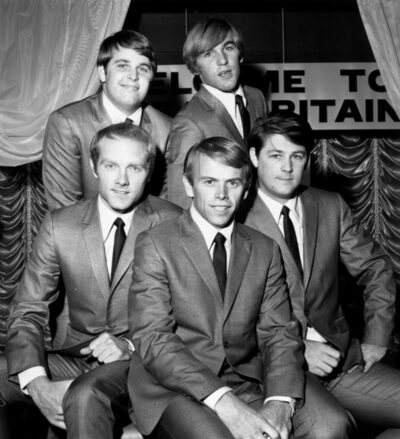 Beneath the breezy hits and matching striped shirts, Brian Wilson was growing restless. While the world saw a surfer idol, Brian saw something deeper—an opportunity to turn pop music into art.
Beneath the breezy hits and matching striped shirts, Brian Wilson was growing restless. While the world saw a surfer idol, Brian saw something deeper—an opportunity to turn pop music into art.
By 1964, he stopped touring to focus full-time on studio work. What followed was one of the most creative explosions in popular music history.
In 1966, Brian released Pet Sounds, a radically different album inspired by emotional vulnerability and unprecedented sonic ambition. Using layered harmonies, orchestral arrangements, bicycle bells, barking dogs, and Theremins, Brian sculpted what he called “teenage symphonies to God.” Songs like Wouldn’t It Be Nice, Don’t Talk (Put Your Head on My Shoulder), and God Only Knows weren’t just emotionally rich—they were structurally groundbreaking.
Paul McCartney has long cited Pet Sounds as his favorite album of all time, even stating that God Only Knows is “the greatest song ever written.” The album’s impact was so profound, it inspired the Beatles to push their own boundaries and create Sgt. Pepper’s Lonely Hearts Club Band—sparking one of music’s most iconic creative rivalries.
Good Vibrations & Endless Possibility
Later that same year, Brian pushed his experimentation even further with Good Vibrations, a genre-defying track that took over six months and $50,000 to complete—a fortune at the time. It was composed in modular sections recorded across multiple studios, then assembled like a musical jigsaw puzzle. The result? A dazzling, psychedelic masterpiece that bent the rules of pop songwriting and opened doors for generations of producers and performers to follow.
No one had ever heard anything like it.
Cracks Beneath the Surface
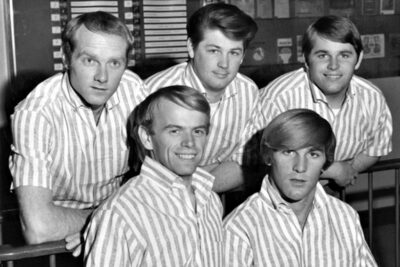 Even as Brian pushed music into new dimensions, his personal life was spiraling. Years of psychological trauma, familial abuse, and drug experimentation took their toll. Diagnosed with schizoaffective disorder and depression, Brian became increasingly reclusive during the late ’60s and ’70s. His once-boundless creative energy dimmed.
Even as Brian pushed music into new dimensions, his personal life was spiraling. Years of psychological trauma, familial abuse, and drug experimentation took their toll. Diagnosed with schizoaffective disorder and depression, Brian became increasingly reclusive during the late ’60s and ’70s. His once-boundless creative energy dimmed.
The most ambitious project of his life, the album Smile, collapsed under the weight of expectations, paranoia, and internal band conflict. It remained unfinished and shrouded in mystery for decades.
During these years, Brian endured destructive relationships, battles with substance abuse, and a controversial conservatorship that placed his well-being under strict control. At times, he became a symbol not of genius, but of fragility.
The Comeback of a Lifetime
But legends don’t fade—they return.
In the 1990s and early 2000s, Brian staged one of the most inspiring comebacks in rock history. With the help of supportive collaborators and the encouragement of fans, he returned to the stage, released new solo albums—including the critically acclaimed That Lucky Old Sun—and in 2004, he finally completed and performed Smile in its entirety.
Smile was no longer a cautionary tale—it was a triumph of perseverance, redemption, and artistic completion.
He toured internationally, performing Pet Sounds live with an emotional sincerity that moved audiences to tears. Despite lingering mental health challenges, he remained engaged with fans, gracious, witty, and still deeply in love with music.
A Legacy Carved in Harmony
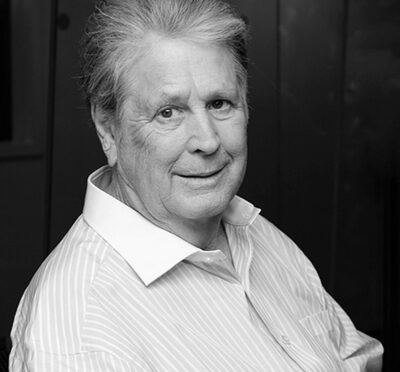 Brian Wilson’s legacy isn’t just confined to the Beach Boys’ discography or pop charts. His fingerprints are found across genres—from psychedelic rock to chamber pop to indie electronica.
Brian Wilson’s legacy isn’t just confined to the Beach Boys’ discography or pop charts. His fingerprints are found across genres—from psychedelic rock to chamber pop to indie electronica.
Artists like David Bowie, Neil Young, Sonic Youth, Daft Punk, Fleet Foxes, and even Kanye West have cited Wilson as a major influence. He showed that vulnerability was not weakness, that commercial music could still be profoundly artistic, and that beauty could emerge from brokenness.
He taught the music world that the studio could be an instrument. That imperfections could carry emotion. That harmony—literal and metaphorical—was still worth chasing.
In 1988, he was inducted into the Rock & Roll Hall of Fame as a Beach Boy, and in 2007, he received the Kennedy Center Honor for his lifetime contribution to American culture. He also earned multiple Grammy Awards and a place among Rolling Stone’s greatest songwriters of all time.
Words from the Heart
Throughout his life, Brian often returned to one simple theme: love. In interviews and in his music, he talked openly about the need for kindness and connection. He once said:
“If there’s not love present, it’s much, much harder to function. When there’s love present, it’s easier to deal with life.”
Perhaps that’s why his music resonates so deeply. Whether you grew up hearing Barbara Ann at a school dance, cried to Surf’s Up during a late-night drive, or found comfort in Love and Mercy, Brian’s songs became part of your inner world.
He didn’t just soundtrack our summers—he gave voice to our feelings when words weren’t enough.
A Visual Tribute to Brian’s Life
Here are some thoughtfully curated images that reflect his remarkable journey:
- Brian Wilson at Capitol Studios during Pet Sounds sessions
- The Beach Boys during their early surf-era peak
- Brian performing “Smile” live in the 2000s—victory in full bloom
- Brian with brothers Dennis and Carl—a family defined by harmony
Farewell to the Dreamer of Harmonies
Brian Wilson taught us that the most beautiful music often comes from the most wounded places. He showed us how to weave joy and sorrow into sound, how to face inner storms and still reach for beauty, and how to dream in stereo when life felt mono.
He was never just a Beach Boy.
He was a poet of the soul, a builder of soundscapes, and a seeker of mercy.
Rest in peace, Brian Wilson. Love and mercy to you—and to all of us who felt your songs. The world sings more sweetly because you were in it.
_____________________
A USARM Viewing Tip: On your mobile or tablet device? Finger-tap all the above images inside the post and stretch image across your device’s screen for LARGEST digitized view.

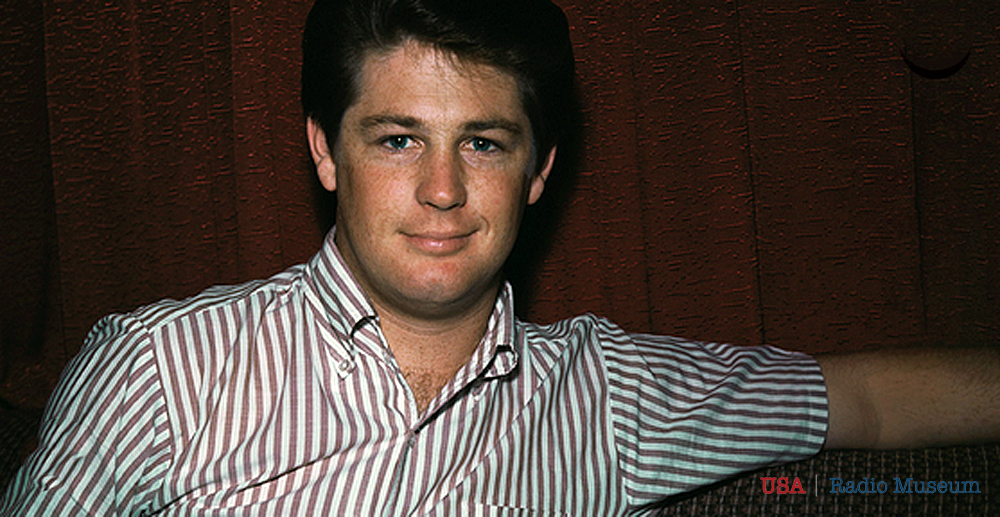
Brian’s Californian musical legacy will live on courtesy of another Californian group, Wilson-Phillips.